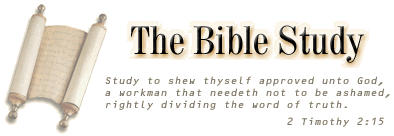Let Us Make Man in Our ImageIn Genesis 1:26 it is written, "And God said, Let us make man in our image, after our likeness." It is a common argument used by Trinitarians to assert that the plural pronoun "us" in this verse is a reference to the Trinity. Of course, this is an inferred argument, seeing that there is no mention of "three persons in one godhead" within Genesis 1:26, or anywhere in the Bible. To the Jews, the existence of the plural pronouns "us" and "our" has never led them to believe that there are three persons in one godhead, communicating as it were, one among another. Below are some of the ways as to how the Jewish rabbis understood the reference to "us" and "our" in the Creation
story.
There was a special command dedicated to the making of man because of his great superiority, since his nature is unlike that of beasts and cattle which were created with the preceding command. [And G-d said; 'Let us make'] The correct explanation of "naaseh" (let us make) is as follows: It has been shown to you that G-d created something from nothing only on the first day, and afterwards He formed and made things from those created elements. Thus when He gave the waters the power of bringing forth a living soul, the command concerning them was 'Let the waters swarm'. The command concerning cattle was 'Let the earth bring forth'. But in the case of man He said, 'Let us make', that is, the aforementioned earth, and I - let us make man. The earth to bring forth the body from its elements as it did with cattle and beasts, as it is written, 'And the Eternal G-d formed man from the dust of the ground', and He, blessed be He, to give the spirit from His mouth, the Supreme One, as it is written, 'And He breathed into his nostrils the breath of life. And He said, 'In our image, and after our likeness', as man will be similar to both. Nahmanides, Creation on Genesis 1:26
Said the Holy One: I will create man in My image and likeness, [and thus he will partake] of the [character of] celestial beings, but he will also reproduce [as is the nature] of terrestrial beings. R. Tifdai said further in the name of R. Aha: The Holy One also declared: If I create man out of celestial elements, he will live [forever] and not die; if out of terrestrial elements, he will die and not live [in a future life]. Therefore I will create him out of both celestial and terrestrial elements. If he sins, he will die; if not, he will live in a future life. "And God saw everything that He had made, and [said], Would that at all times it were very good." Midrash Breisheet I, Creation on Genesis 2:7
["Let us make the human in our image" (Genesis 1:26)] implies that the Creator addressed all of creation before making the human, meaning that in creating the human, the Infinite One incorporated all of the attributes of all the animals and plants and minerals and so on that had been created up to this point. In each of us, then, are the powers of all the creatures of the earth. Rabbi Moshe Cordovero, Shi'ur HaKomah, Torah, Ch. 4
Source: Compiled by Philip Kapusta Midrash: Any of a group of Jewish commentaries on the Hebrew Scriptures compiled between A.D. 400 and 1200 and based on exegesis, parable, and haggadic legend. |
